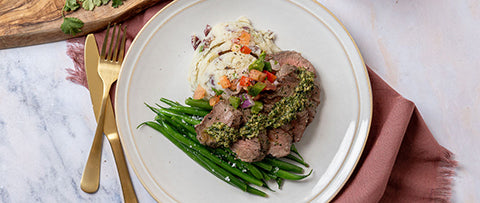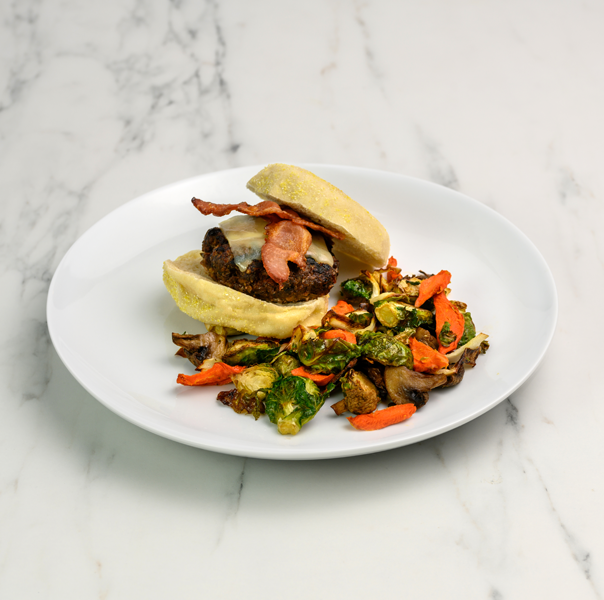It has been a long week of work, meetings, family obligations, and just everyday life. And somehow with your busy schedule you’ve managed to fight the temptation of donuts in the break room and the usual take out for dinner on the way home from work. You’ve stuck to your healthy eating all week. You deserve a reward, don’t you? A cheat meal perhaps?
Just like the name implies, a cheat meal is a meal that veers you away from your usual healthy eating and gives you the chance to indulge in foods that you normally would not eat. Essentially, cheating on your diet. If you’re cutting carbs you may opt for a plate of that yummy pasta and a side of garlic bread at your favorite Italian restaurant up the street. Or maybe it has been a long week of saying no to sweets and you’re rewarding yourself with a pastry from the bakery.
This reward based strategy has always been pretty popular and it is gaining more and more popularity as it makes its way to mainstream diet culture. Some think that allowing yourself occasional periods of indulgence will make you more likely to stick to your diet after getting your “fix”. Others argue that getting off track of your diet for even one meal could ruin your dedication and progress. So, to cheat meal or not to cheat meal?
The truth is, there is no right answer. Cheat meals differ from person to person depending on an individual's diet and goals. There is no specific guideline for how often or what kind of cheat meal you should have. There’s also no rule that you even have to incorporate cheat meals into your diet at all. If cheat meals work for you and keep you on track, great! But the not so exciting thing about cheat meals is that they can also have an adverse effect. If you find yourself overindulging, becoming obsessive about food, or not seeing results on your diet after incorporating cheat meals, they may be working against you. Whether you regularly incorporate cheat meals, are thinking about incorporating cheat meals, or scared to death of cheat meals, below are some of our do’s and don’ts to keep you on track when it comes to cheat meals.
Don’t refer to it as a “cheat meal”
The word “cheat” has a negative connotation and is often associated with feelings of guilt and failure. Using this term to describe your meal could impair your ability to control your portions which could potentially lead to overeating. Associating the word “cheat” with your favorite foods could also eventually cause you to have negative feelings towards those foods. I mean who wants to feel guilty while indulging in some ice cream? No fun.
Do refer to it as a “treat”
Reframe your cheat meal with a more positive word such as a treat meal. This can take out the negative feelings of breaking rules or being bad. Which in turn, can help you better support your healthy eating behaviors. You’ve worked hard and if you feel you deserve a treat, go for it! Don’t feel bad, enjoy!
Don’t turn your cheat meal into a cheat day
You wake up to enjoy your treat meal of chocolate chip pancakes with powdered sugar and whipped cream for breakfast. It would be great to follow that meal up with something healthy for lunch, like a salad to balance your heavy breakfast. But that first meal was just so good that you want to keep going and go all out for lunch, too. It’s easy to zone out when indulging and one of the most common downfalls when incorporating cheat meals is over indulging. Don’t let your cheat meal turn into a cheat day, or week for that matter.
Do plan ahead and be mindful
Whether you’ve chosen your treat meal to be your breakfast, lunch, or dinner, it’s important to have other healthy meals already planned around that meal so that you are not tempted to stay off track. To plan your meals for the week in advance, download the Winning Week Meal Planning Worksheet.
Mindfulness is just as important when it comes to treat meals as it is to your other everyday meals. You should still pay attention to hunger cues and not be under the assumption that you can just eat as much as you want. Keep in mind that treat meals are about eating what you want, not eating as much as you can.
Don’t let guilt get the best of you
Have you ever heard that little voice in your head quietly judging you before you dive into your cheat meal? “You’re cheating.” “Do you really need that?” “This is so bad.” That right there, is guilt. Feelings of guilt take all of the enjoyment out of indulging in your favorite foods that you’ve missed so much, so then what’s the point? Feelings of guilt can also make you start categorizing foods as “good” or “bad,” or even worse, in the moment categorizing yourself as “good” or “bad.” Guilt comes with an array of negative thoughts and feelings that can not only affect your meal time but can also affect your self control, confidence, and overall progress.
Do find ways to make your cheat meals healthier
If guilt is something that you can’t escape when it’s time for your treat meal, maybe it’s time to doctor up some of your favorite treats and make them healthier. You’ve been craving a nice warm brownie but when it finally gets in front of you all you can focus on is the extra sugar and fat that it’s loaded with. Instead of letting those feelings of guilt and worry negatively affect your treat meal, find some healthy swaps that won’t stray too far away from your healthy diet. Instead of white flour, experiment with almond flour or brown rice flour. Substitute maple syrup or honey for sweetness instead of white sugar. A healthy brownie, muffin, or even cake are absolutely possible!
Don’t feel pressured to incorporate cheat meals at all
Who doesn’t love taking a picture of their cheat meal and uploading it for all of your friends to see? We’ve all done it and we’ve all seen it. You’re excited, we get it, and that's great! But cheat meals aren’t for everyone.
Even though they have gained so much popularity and many people believe in them helping with staying on track, they may not be for you and that's okay! Whether you just don't feel the urge to indulge or it’s just not something you want to incorporate into your lifestyle, do what works for you and stay true to yourself. There is nothing wrong with permanently removing not-so-healthy-foods from your diet and sticking to it.
Do make your everyday diet enjoyable
One reason why diets are so hard to stick to is because you’re eating foods that you don’t actually like. Eating foods you don’t like shouldn’t be looked at as a requirement to achieve or maintain a healthy lifestyle. Incorporating variety and foods that you enjoy in your diet everyday can make treat meals less extreme or not needed at all. Working towards maintaining a healthy lifestyle is about sustainable changes that meet your own personal needs. Like we mentioned above, there is no right answer. If you’re having issues expanding your variety or differentiating between what’s healthy and what’s not, consider buying your healthy meals already prepared. A lot of meal prep companies, like fit-flavors, offer a wide variety of healthy foods for you to choose from. This eliminates the feelings of being stuck eating foods you don’t enjoy as well as the hassle of making sure they’re healthy.
Treat meals, which allow room to occasionally indulge and stray away from your everyday diet, can effectively motivate some to stay on track with their eating plan. However, they can be unhealthy for people who struggle with controlling portions, mindfulness, or negative feelings that surround meal times.
If you need extra help with controlling your treat meals or deciding if they should be a part of your diet, consider consulting with a dietitian about your concerns.






